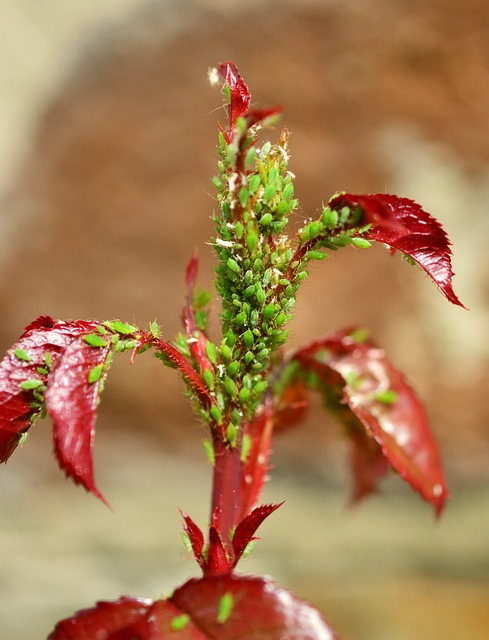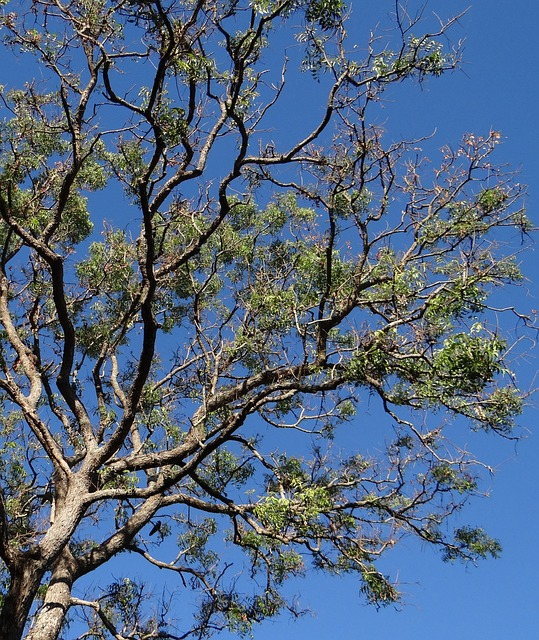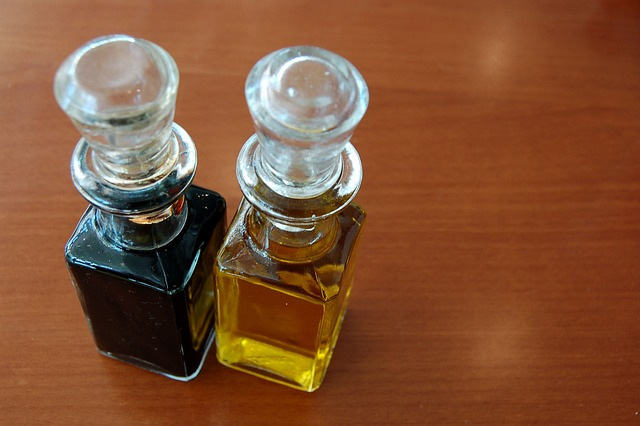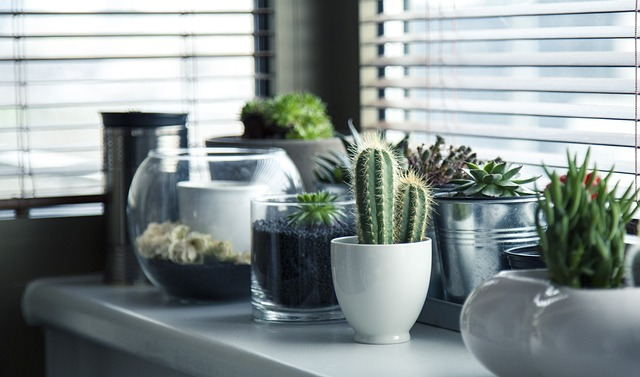HousePlantJoy is supported by our audience. When you purchase through one of our links, we may earn a small affiliate commission. As an Amazon Associate I earn from qualifying purchases. Your cost is not affected.
==================
Introduction to Pest Control for Indoor Plants
As an indoor plant enthusiast, I’ve had my fair share of challenges with pests. Unwelcome critters can wreak havoc on our beloved houseplants, causing damage and sometimes even plant death. Pest control for indoor plants is a crucial aspect of plant care, but many are unsure about how to tackle it.
Conventional insecticides may seem like a quick and easy solution, but they often contain harsh chemicals that can be harmful to both your plants and your health. That’s why I am a proponent of more natural, homemade solutions – like homemade bug spray for indoor plants. Not only are they safer, but they can also be just as effective.
Experience Natural Bug Spray for Houseplants
In this blog post, I’ll share my insights and experiences with pest control for indoor plants. We’ll discuss the common bugs that impact indoor plants, the importance of natural insecticides, and how to create and use your own homemade bug spray. So if you’re a fellow plant lover looking for a natural and effective pest control strategy, read on!
Where Do These Pests Come From?
Even the cleanest home might experience pests on the indoor plants. It happens
But How Do They Get There?
These tiny bugs can gain access in some ways. They might come in through a crack or tiny opening. But they might also enter whenever the door is opened, even for a moment.
Another possible entry is on your clothes or even with your groceries. And if you bring new plants in, be sure to check them carefully for pests.
At Joyful Eco, our plants are inspected carefully for pests throughout their growth cycle and before shipping. We don’t like these little critters on our plants, either.
As a preventive measure, when bringing in new plants from your local garden shop, we recommend treating them. Before bringing them into a room with your current houseplants, this should be done.
Understanding the Threat: Common Bugs That Affect Indoor Plants
Indoor plants are unfortunately not immune to the threat of bugs. Some of the most common pests include aphids, spider mites, scale insects, and whiteflies. Aphids are tiny insects that suck the sap from plants, causing them to wilt and die. Spider mites are microscopic pests that also feed on plant sap, often causing discolored or speckled leaves.
Other Insect Pests
Scale insects are another threat to indoor plants. They attach themselves to the stems and leaves of plants and feed on their sap. This can result in yellowing leaves and stunted growth. Whiteflies, on the other hand, are small, moth-like insects that also feed on plant sap, causing wilting and leaf drop.
Understanding the types of bugs that can affect your indoor plants is the first step in effective pest control. By identifying the culprit, you can tailor your pest control strategy to target that specific pest.
The Importance of Natural Insecticides for Indoor Plants
When it comes to pest control for indoor plants, many people turn to chemical insecticides. However, these can be harmful to both your plants and your health. That’s why natural insecticides for indoor plants are a more appealing solution.
Natural insecticides are typically made from ingredients that are safe for the environment and non-toxic to humans and pets. Moreover, they can be just as effective as their chemical counterparts. For instance, neem oil, a natural insecticide, is known to be effective against a wide range of pests.
Another benefit of natural insecticides is that they are less likely to lead to insect resistance. This is a common problem with chemical insecticides, where pests can develop resistance over time, making the insecticides less effective.
Homemade Bug Spray for Indoor Plants: What It Is and How It Works
A homemade bug spray for indoor plants is a natural insecticide that you can make at home using simple, non-toxic ingredients. The idea is to create a solution that is lethal to pests but harmless to your plants and your health.
The most common ingredients for a homemade bug spray are water, liquid soap, and some form of a deterrent, like garlic or hot pepper. The soap works by breaking down the insect’s exoskeleton, causing it to dehydrate and die. The deterrents, on the other hand, make the plant unappealing to the pests, discouraging them from feeding on it.
Step-by-Step Guide: How to Make Your Own Indoor Plant Bug Spray
Making your own homemade bug spray for indoor plants is a straightforward process. Here’s how you can do it:
- Start by filling a spray bottle with one cup of water.
- Add a tablespoon of liquid soap. Be sure to use a mild, unscented soap to avoid damaging your plants.
- Add a teaspoon of a deterrent, like crushed garlic or cayenne pepper.
- Shake the bottle well to mix the ingredients.
Your homemade bug spray is now ready to use!
Other Homemade Bug Spray Options
There are many natural homemade bug sprays that you can use to protect your indoor plants from pests. Here are some of the most common and effective ones:
-
Insecticidal Soap:
This is a popular bug spray for treating a wide range of pests, such as aphids, spider mites, whiteflies, and mealybugs. It consists of vegetable oil, liquid dish soap, and water. It works by dissolving the protective coating of the insects and dehydrating them.
To make insecticidal soap, you need 1/4 cup of vegetable oil, 1 tablespoon of liquid dish soap (one that does not contain bleach, degreaser, synthetic dyes, or fragrances), and a gallon of water. Mix the oil and soap in a spray bottle, then fill it with water and shake well. Spray the solution on your plants once a week until the pests are gone.
-
Neem Oil:
This organic insecticide has seen a rise in popularity as a method to treat everything from fungal infections to caterpillars. It is derived from the seeds of the neem tree, which is native to India. It reduces feeding and disrupts the life cycle of many harmful insects and related pests.
Mix one to two tablespoons of pure, cold-pressed neem oil with a gallon of water to use neem oil as a bug spray. You can add one to two teaspoons of dish soap to the mix to help the neem oil adhere to the plants. Alternatively, you can use neem oil as a root soak to treat root rot.
-
Vinegar:
This simple and cheap bug spray can deter ants, slugs, snails, and other crawling pests. It works by lowering the pH level of the soil and making it inhospitable for them.
To use vinegar as a bug spray, mix one part white vinegar with three parts water in a spray bottle. Spray the solution around the base of your plants and on any visible pests. Be careful not to spray too much or too often, as vinegar can also harm your plants if used excessively.
-
Garlic:
This powerful bug spray can repel and kill many insects, such as aphids, whiteflies, thrips, and leafhoppers. It emits a strong odor that deters them from feeding on your plants.
To make garlic spray, you need a whole bulb of garlic, two cups of water, and a teaspoon of dish soap. Peel and chop the garlic cloves, then blend them with water in a blender. Strain the mixture through a cheesecloth or a fine sieve, then add the dish soap and stir well. Transfer the solution to a spray bottle and spray it on your plants every few days until the pests are gone.
These are some of the natural homemade bug sprays you can use for indoor plants. I hope you find them helpful and easy to make.
Essential Oils – My Personal Favorite Method
Essential oils are natural substances that can be used to control houseplant pests without harming the environment or your health. They work by repelling or killing the insects that feed on your plants, such as aphids, spider mites, whiteflies, and mealybugs. They also have antifungal and antibacterial properties that can prevent or treat plant diseases.
How to Use Essential Oils
To use essential oils for your indoor plants, you need to dilute them with water and a carrier agent, such as dish soap or witch hazel. This helps the oil to mix with water and stick to the plant surface. You can use a spray bottle to apply the solution to your plants, covering both the top and bottom of the leaves and the stems.
Spray your plants once a week for prevention, or every few days for treatment, until the pests are gone. You should also avoid spraying your plants in direct sunlight or when they are stressed, as this can cause damage.
Some of the best essential oils for indoor plants are peppermint, lavender, cinnamon, garlic, and neem oil. Each of these oils has different effects and benefits for your plants, so you can choose the one that suits your needs best. You can also combine different oils to create a more potent and effective solution.
Which Essential Oils Work Best?
My top 10 essential oils that you can use for natural homemade pest removal on house plants:
Peppermint Oil:
Peppermint oil is a strong insect repellent that can help to keep away ants, spiders, aphids, and beetles. It is also effective against fungus gnats.
Rosemary Oil:
Rosemary oil is a good repellent for moths, flies, mosquitoes, and ticks. It can also help to kill spider mites.
Tea Tree Oil:
Tea tree oil is a natural insecticide that can kill various pests, including ants, aphids, mealybugs, and scale insects.
Cinnamon Bark Oil:
Cinnamon bark oil is a powerful insect repellent that can help keep silverfish, cockroaches, and dust mites away. It can also help to kill spider mites.
Clove Oil:
Clove oil is another powerful insect repellent that can help to keep away ants, wasps, cockroaches, and aphids. It can also help to kill spider mites.
Lemongrass Oil:
Lemongrass oil is a natural insecticide that can kill a variety of pests, including aphids, mosquitoes, fleas, and ticks. It can also help to repel ants and spiders.
Lavender Oil:
Lavender oil is not as effective as some of the other essential oils on this list for pest control, but it can still help to repel some pests, such as mosquitoes and flies. It can also help to soothe damaged plant leaves.
Cedarwood Oil:
Cedarwood oil is a natural insect repellent that can help to keep away ants, moths, and beetles. It can also help to kill spider mites.
Oregano Oil:
Oregano oil is a natural insecticide that can kill various pests, including aphids, mealybugs, scale insects, and whiteflies.
Patchouli Oil:
Patchouli oil is a natural insect repellent that can help keep fungus gnats and spider mites away.
Dilution Rates for Combatting Common Houseplant Pests
When using essential oils for pest control on house plants, it is important to dilute them with water. A good dilution ratio is 10-15 drops of essential oil per 1 cup of water. You can also add a few drops of dish soap to the mixture to help it adhere to the plant leaves. Spray the mixture on the plant leaves, being sure to get into all the nooks and crannies. You may need to reapply the spray every few days for best results.
Test on a Few Leaves
It is important to note that essential oils can harm some plants, so it is always best to test the spray on a small area of the plant before applying it to the entire plant. You should also avoid using essential oils on already stressed or damaged plants.
How to Get Rid of Bugs on Indoor Plants Naturally Using Your Homemade Spray
To use your homemade bug spray, spray it onto the affected areas of your plants. Be sure to cover the leaves’ tops and bottoms, as pests often hide underneath them.
Repeat this process every few days until the pests are gone. Always test the spray on a small area of the plant first to ensure it doesn’t cause any damage.
Note that your natural bug killer may not last as long as chemical pesticides. You might find you need to retreat with natural pesticides to keep away unwanted pests.
Tips for Using Bug Killer for Houseplants Effectively
Using a bug killer for houseplants effectively involves more than just spraying it onto your plants. Here are some tips to help you get the most out of your homemade bug spray:
- Regularly inspect your plants for signs of pests. Early detection is key to effective pest control. If you aren’t sure of which pests your plants have, check out this guide for easy reference.
- Always test the bug spray on a small area of the plant first. This will help you ensure that it doesn’t harm your plants.
- Don’t forget to spray the undersides of leaves. This is where pests often hide.
- Repeat the treatment every few days until the pests are gone. One application is often not enough to completely eradicate the pests.
Comparing Homemade Bug Spray with Other Insecticides for Indoor Plants
When compared to other insecticides for indoor plants, homemade bug spray has several advantages. First and foremost, it’s natural and non-toxic, making it safer for both your plants and your health.
It’s also cost-effective, as it’s made from inexpensive, readily available ingredients. Moreover, unlike many chemical insecticides, it’s less likely to lead to insect resistance.
However, homemade bug spray may not be as effective against severe infestations or certain types of pests. In such cases, stronger, store-bought insecticides may be necessary.
The Best Insecticide for Indoor Plants: Store-Bought or Homemade?
So, what’s the best insecticide for indoor plants: store-bought or homemade? The answer depends on your specific situation. If you’re dealing with a minor infestation or want to prevent pests naturally, a homemade bug spray can be an effective and safe solution.
However, for severe infestations or stubborn pests, a stronger, store-bought insecticide may be necessary. Just remember to always use these products according to their instructions to ensure their safety and effectiveness.
Embrace a Natural and Effective Indoor Plant Care Strategy
Pest control is a crucial aspect of indoor plant care, and homemade bug spray for indoor plants offers a natural and effective solution. Not only is it safer for your plants and your health, but it’s also cost-effective and easy to make.
Remember, dealing with pests is part of the journey of indoor plant ownership. But with a bit of knowledge and effort, you can keep your plants healthy and pest-free. So, embrace the challenge, and happy planting!
FAQs
What are common pests that can infest indoor plants?
Common indoor plant pests include aphids, mealybugs, spider mites, whiteflies, and fungus gnats. These pests can damage plants by feeding on leaves, stems, and roots.
How can I prevent indoor plant pest infestations?
To prevent pest infestations, regularly inspect your plants for signs of pests, maintain proper watering and lighting conditions, isolate new plants temporarily, and keep your indoor environment clean. Quarantine new plants for a few weeks before introducing them to your collection.
What are some natural pest control methods for indoor plants?
Natural methods include introducing beneficial insects like ladybugs and predatory mites, using neem oil or insecticidal soap sprays, wiping leaves with a mixture of water and mild dish soap, and maintaining a healthy environment by ensuring proper ventilation and avoiding overwatering.
? Dive into the Greenery: Join Our Plant-Lover Community! ?
Explore a world of lush content, insightful reviews, and a vibrant community united by the love of houseplants and green-thumb wisdom.
?? Connect with us on:
? Instagram: houseplantjoy20 ? Pinterest: houseplantjoy ? Twitter: houseplantjoy ? TikTok: @houseplantjoy ? Facebook: houseplantjoyblog
Unearth expert care tips, stunning visuals, and a friendly community that shares your plant passion. Ready to nurture your plant joy? ???












